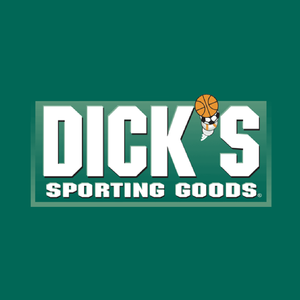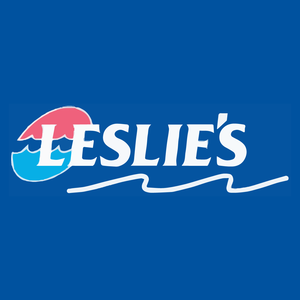
Leslie's (LESL)
Leslie's is up against the odds. Not only is its demand weak but also its falling returns on capital suggest it’s becoming less profitable.― StockStory Analyst Team
1. News
2. Summary
Why We Think Leslie's Will Underperform
Named after founder Philip Leslie, who established the company in 1963, Leslie’s (NASDAQ:LESL) is a retailer that sells pool and spa supplies, equipment, and maintenance services.
- Revenue base of $1.24 billion puts it at a disadvantage compared to larger competitors exhibiting economies of scale
- Substandard operating margin profitability and its deterioration over the last year limit its responsiveness to unforeseen market trends
- High net-debt-to-EBITDA ratio of 15× increases the risk of forced asset sales or dilutive financing if operational performance weakens


Leslie’s quality doesn’t meet our expectations. We see more attractive opportunities in the market.
Why There Are Better Opportunities Than Leslie's
High Quality
Investable
Underperform
Why There Are Better Opportunities Than Leslie's
At $2.82 per share, Leslie's trades at 0.5x forward EV-to-EBITDA. Leslie’s valuation may seem like a bargain, but we think there are valid reasons why it’s so cheap.
We’d rather pay up for companies with elite fundamentals than get a bargain on weak ones. Cheap stocks can be value traps, and as their performance deteriorates, they will stay cheap or get even cheaper.
3. Leslie's (LESL) Research Report: Q3 CY2025 Update
Pool products retailer Leslie’s (NASDAQ:LESL) reported Q3 CY2025 results beating Wall Street’s revenue expectations, but sales fell by 2.2% year on year to $389.2 million. On the other hand, the company’s full-year revenue guidance of $1.18 billion at the midpoint came in 4.4% below analysts’ estimates. Its non-GAAP profit of $0.09 per share was 93.1% below analysts’ consensus estimates.
Leslie's (LESL) Q3 CY2025 Highlights:
- Revenue: $389.2 million vs analyst estimates of $373.5 million (2.2% year-on-year decline, 4.2% beat)
- Adjusted EPS: $0.09 vs analyst expectations of $1.30 (93.1% miss)
- Adjusted EBITDA: $45.16 million vs analyst estimates of $39.36 million (11.6% margin, 14.8% beat)
- EBITDA guidance for the upcoming financial year 2026 is $65 million at the midpoint, below analyst estimates of $74.97 million
- Operating Margin: -38.6%, down from 6.6% in the same quarter last year
- Free Cash Flow Margin: 10.7%, up from 8.6% in the same quarter last year
- Locations: 1,000 at quarter end, down from 1,021 in the same quarter last year
- Same-Store Sales fell 6.5% year on year (-8.3% in the same quarter last year)
- Market Capitalization: $27.4 million
Company Overview
Named after founder Philip Leslie, who established the company in 1963, Leslie’s (NASDAQ:LESL) is a retailer that sells pool and spa supplies, equipment, and maintenance services.
The core customer is therefore a homeowner or commercial property manager who must maintain pools and hot tubs. This customer can count on Leslie’s for products such as pool chemicals, cleaning tools, and accessories such as lights, ladders, and covers. In addition to products, Leslie’s offers professional services such as equipment installation and water testing.
Overall, pools take consistent care to properly maintain, and overlooking or greatly delaying maintenance can lead to an unusable pool (green water, ew!) or much more expensive problems down the line. A number of products sold can therefore border on non-discretionary for a homeowner with a pool. Leslie’s is a one-stop shop for these maintenance and minor repair needs.
Leslie's stores typically range in size from 5,000 to 10,000 square feet. They are positioned in suburban areas with high household incomes and high residential density to increase the odds of nearby pools. In addition to the physical store footprint, Leslie’s has an e-commerce platform where customers can buy products for home delivery or store pickup as well as schedule service appointments.
4. Specialty Retail
Some retailers try to sell everything under the sun, while others—appropriately called Specialty Retailers—focus on selling a narrow category and aiming to be exceptional at it. Whether it’s eyeglasses, sporting goods, or beauty and cosmetics, these stores win with depth of product in their category as well as in-store expertise and guidance for shoppers who need it. E-commerce competition exists and waning retail foot traffic impacts these retailers, but the magnitude of the headwinds depends on what they sell and what extra value they provide in their stores.
Competitors that sell pool and spa supplies include Pool Corporation (NASDAQ:POOL) and Hayward Holdings (NYSE:HAYW), although these companies sell more to professionals than DIY homeowners.
5. Revenue Growth
Reviewing a company’s long-term sales performance reveals insights into its quality. Any business can put up a good quarter or two, but many enduring ones grow for years.
With $1.24 billion in revenue over the past 12 months, Leslie's is a small retailer, which sometimes brings disadvantages compared to larger competitors benefiting from economies of scale and negotiating leverage with suppliers.
As you can see below, Leslie’s demand was weak over the last three years (we compare to 2019 to normalize for COVID-19 impacts). Its sales fell by 7.4% annually as it didn’t open many new stores and observed lower sales at existing, established locations.
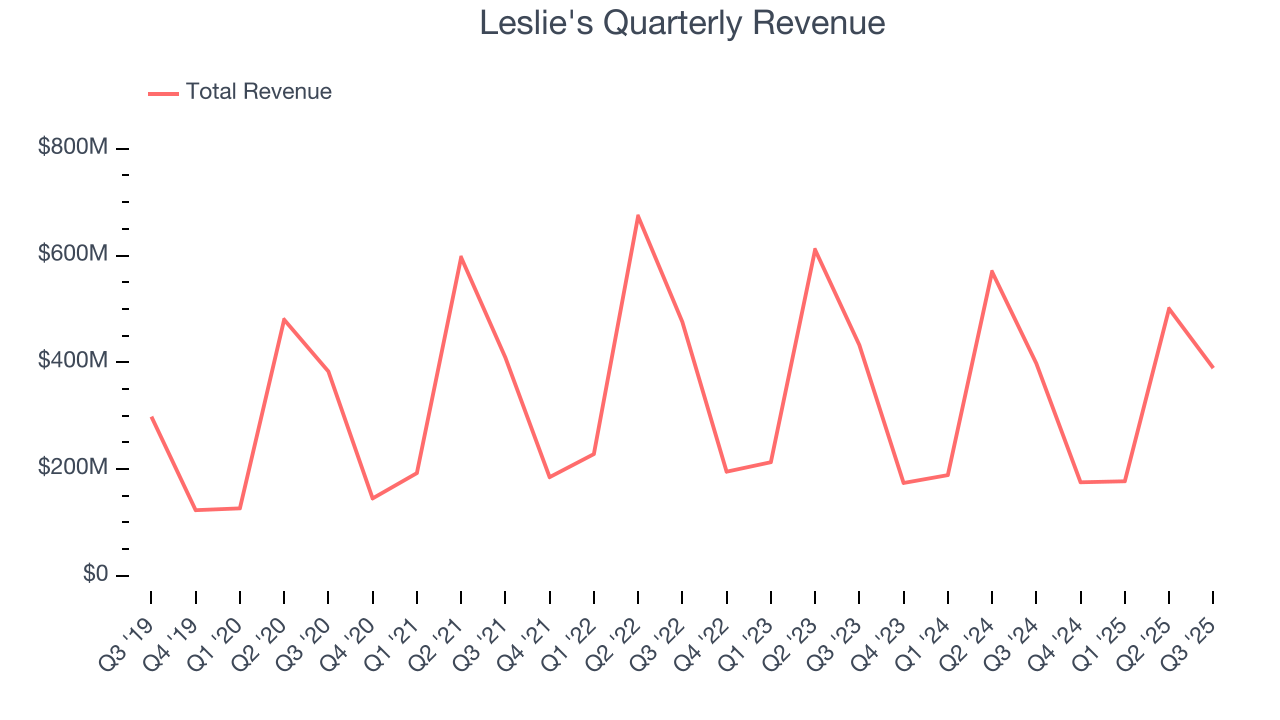
This quarter, Leslie’s revenue fell by 2.2% year on year to $389.2 million but beat Wall Street’s estimates by 4.2%.
Looking ahead, sell-side analysts expect revenue to remain flat over the next 12 months. Although this projection indicates its newer products will catalyze better top-line performance, it is still below the sector average.
6. Store Performance
Number of Stores
Leslie's listed 1,000 locations in the latest quarter and has kept its store count flat over the last two years while other consumer retail businesses have opted for growth.
When a retailer keeps its store footprint steady, it usually means demand is stable and it’s focusing on operational efficiency to increase profitability.
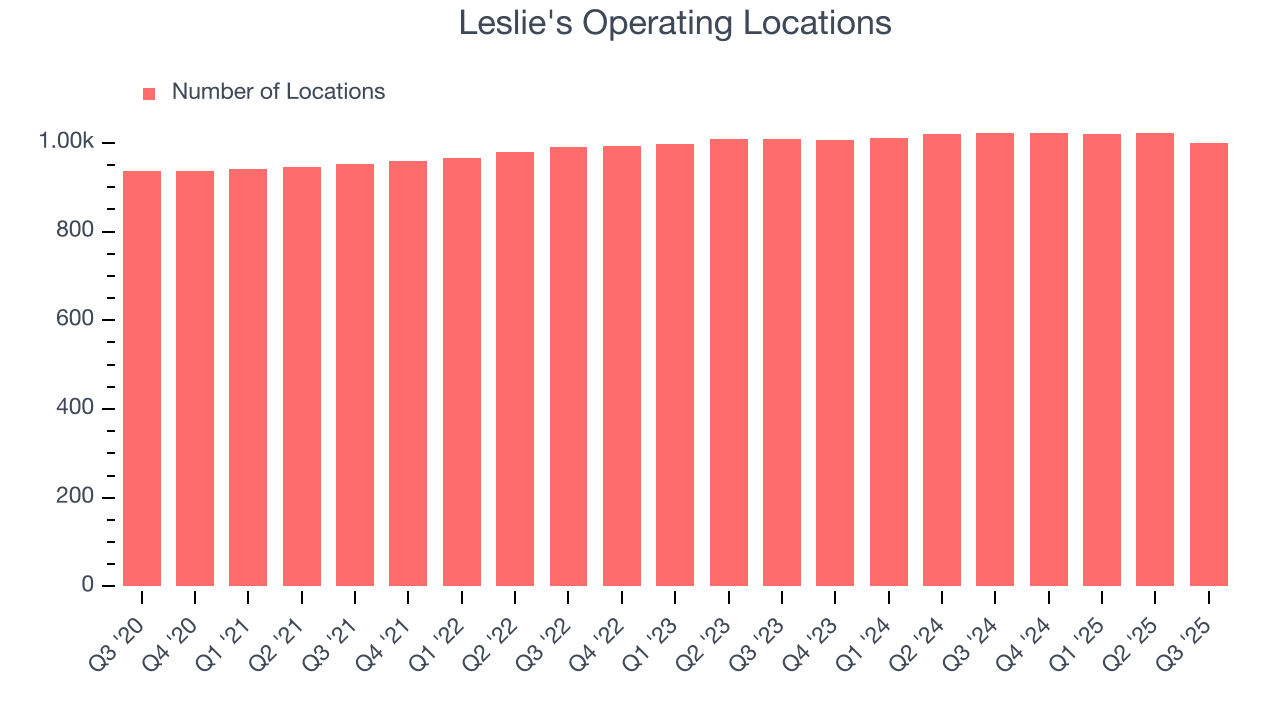
Same-Store Sales
The change in a company's store base only tells one side of the story. The other is the performance of its existing locations and e-commerce sales, which informs management teams whether they should expand or downsize their physical footprints. Same-store sales is an industry measure of whether revenue is growing at those existing stores and is driven by customer visits (often called traffic) and the average spending per customer (ticket).
Leslie’s demand has been shrinking over the last two years as its same-store sales have averaged 8.1% annual declines. This performance isn’t ideal, and we’d be concerned if Leslie's starts opening new stores to artificially boost revenue growth.
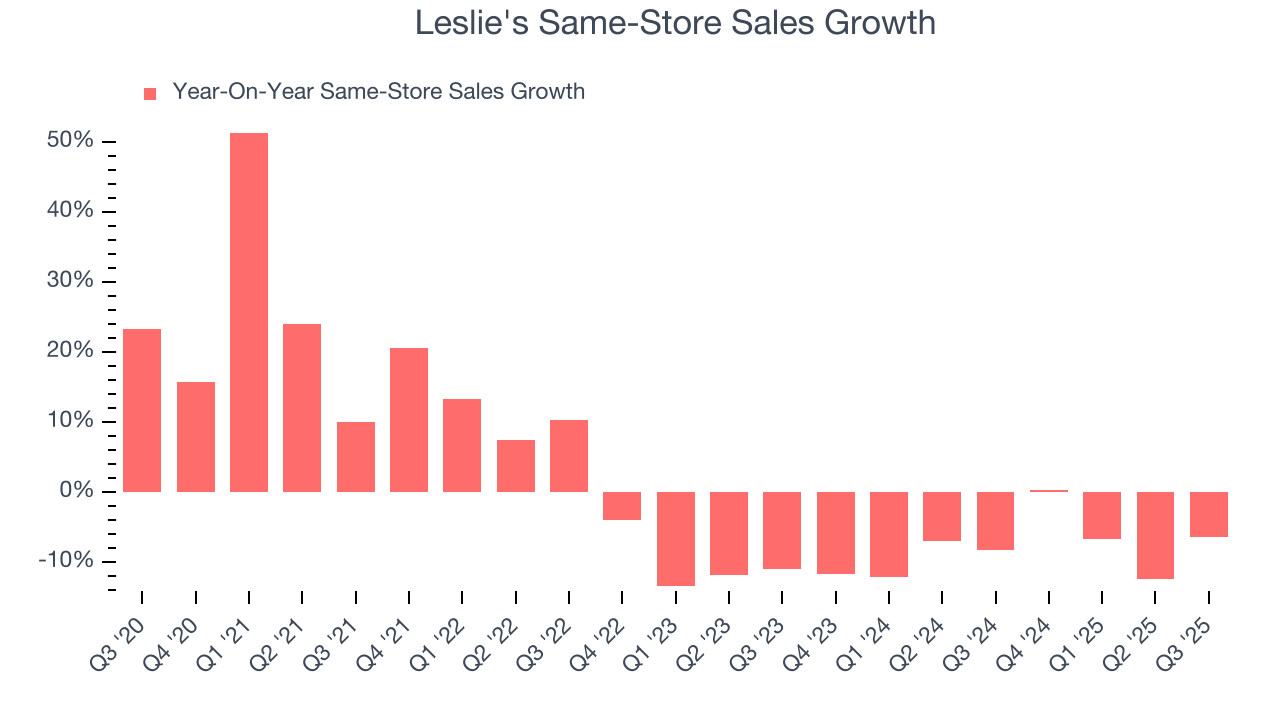
In the latest quarter, Leslie’s same-store sales fell by 6.5% year on year. This decrease represents a further deceleration from its historical levels. We hope the business can get back on track.
7. Gross Margin & Pricing Power
Leslie's has bad unit economics for a retailer, giving it less room to reinvest and grow its presence. As you can see below, it averaged a 35.6% gross margin over the last two years. That means Leslie's paid its suppliers a lot of money ($64.37 for every $100 in revenue) to run its business. 
Leslie's produced a 38.6% gross profit margin in Q3, marking a 2.6 percentage point increase from 36% in the same quarter last year. Zooming out, the company’s full-year margin has remained steady over the past 12 months, suggesting it strives to keep prices low for customers and has stable input costs (such as labor and freight expenses to transport goods).
8. Operating Margin
Operating margin is an important measure of profitability as it shows the portion of revenue left after accounting for all core expenses – everything from the cost of goods sold to advertising and wages. It’s also useful for comparing profitability across companies with different levels of debt and tax rates because it excludes interest and taxes.
Despite the consumer retail industry’s secular decline, unprofitable public companies are few and far between. Unfortunately, Leslie's was one of them over the last two years as its high expenses contributed to an average operating margin of negative 4.4%.
Looking at the trend in its profitability, Leslie’s operating margin decreased by 18 percentage points over the last year. Leslie’s performance was poor no matter how you look at it - it shows that costs were rising and it couldn’t pass them onto its customers.

This quarter, Leslie's generated a negative 38.6% operating margin. The company's consistent lack of profits raise a flag.
9. Cash Is King
Although earnings are undoubtedly valuable for assessing company performance, we believe cash is king because you can’t use accounting profits to pay the bills.
Leslie's has shown mediocre cash profitability over the last two years, giving the company limited opportunities to return capital to shareholders. Its free cash flow margin averaged 1.7%, subpar for a consumer retail business.
Taking a step back, we can see that Leslie’s margin dropped by 5.9 percentage points over the last year. This decrease warrants extra caution because Leslie's failed to grow its same-store sales. Its cash profitability could decay further if it tries to reignite growth by opening new stores.
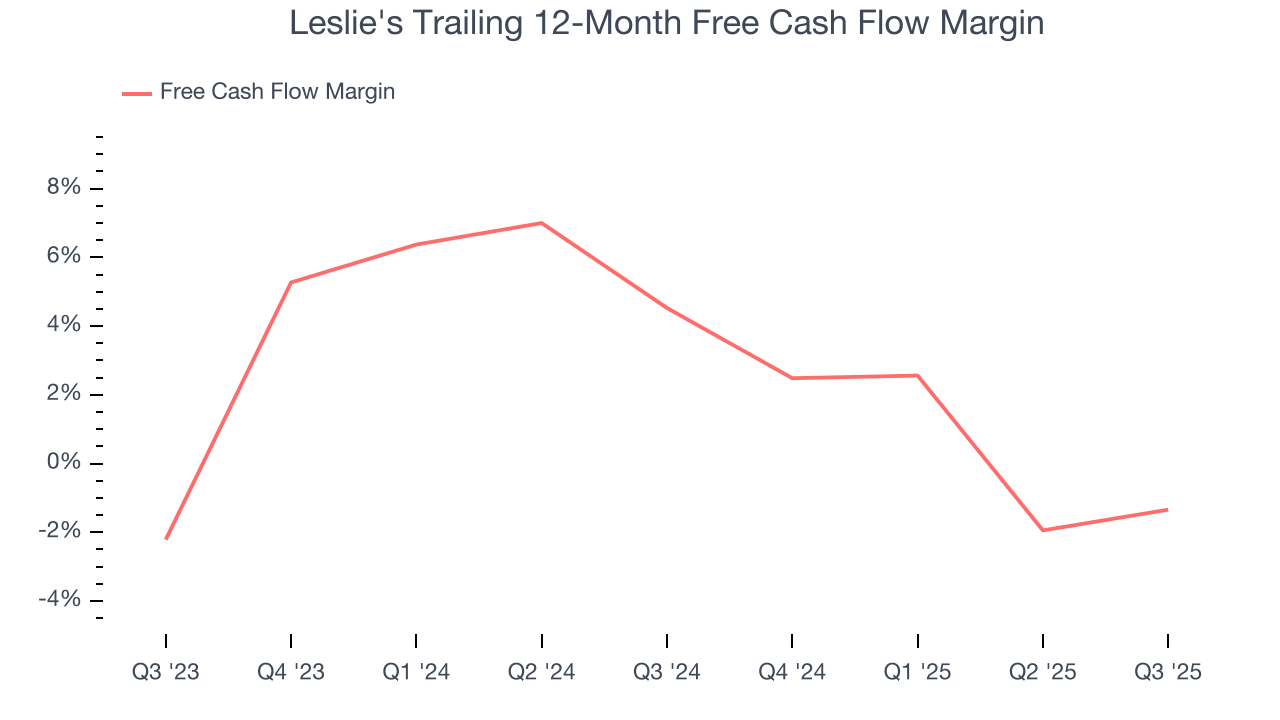
Leslie’s free cash flow clocked in at $41.79 million in Q3, equivalent to a 10.7% margin. This result was good as its margin was 2.2 percentage points higher than in the same quarter last year, but we wouldn’t read too much into the short term because investment needs can be seasonal, causing temporary swings. Long-term trends carry greater meaning.
10. Return on Invested Capital (ROIC)
EPS and free cash flow tell us whether a company was profitable while growing its revenue. But was it capital-efficient? Enter ROIC, a metric showing how much operating profit a company generates relative to the money it has raised (debt and equity).
Leslie's historically did a mediocre job investing in profitable growth initiatives. Its five-year average ROIC was 11.2%, somewhat low compared to the best consumer retail companies that consistently pump out 25%+.
11. Balance Sheet Risk
As long-term investors, the risk we care about most is the permanent loss of capital, which can happen when a company goes bankrupt or raises money from a disadvantaged position. This is separate from short-term stock price volatility, something we are much less bothered by.
Leslie’s $1.01 billion of debt exceeds the $64.34 million of cash on its balance sheet. Furthermore, its 15× net-debt-to-EBITDA ratio (based on its EBITDA of $61.35 million over the last 12 months) shows the company is overleveraged.
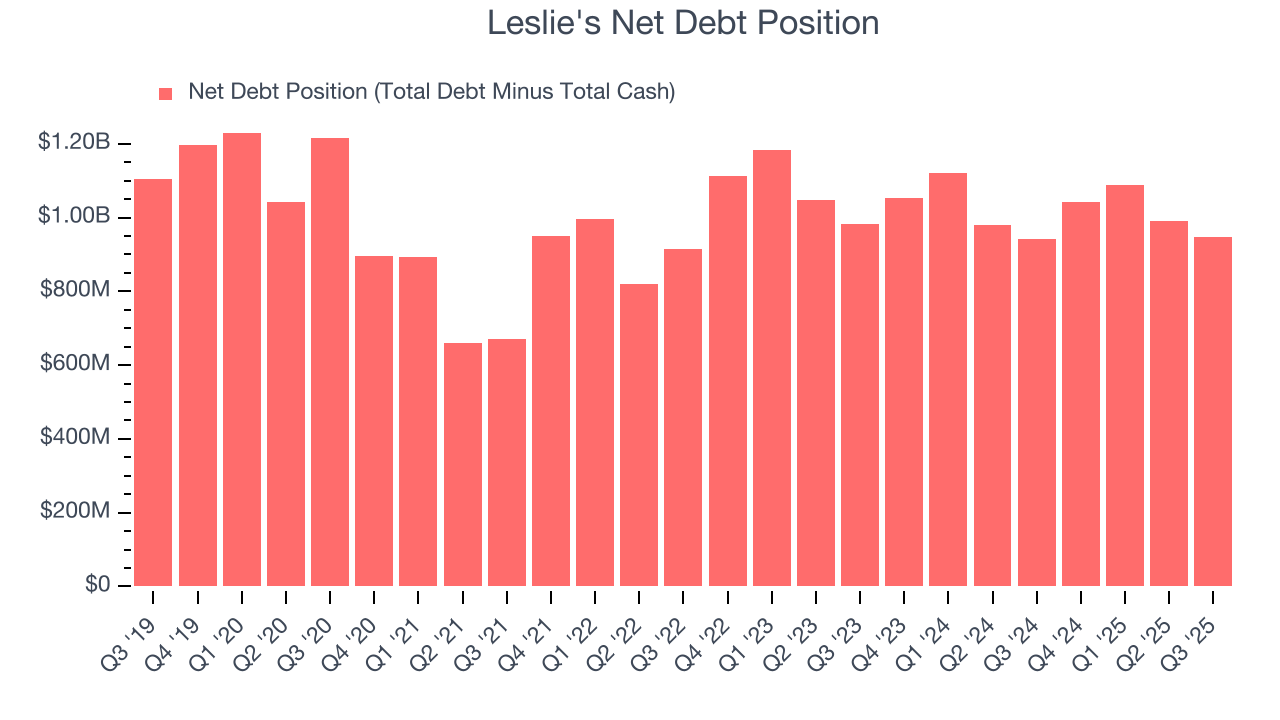
At this level of debt, incremental borrowing becomes increasingly expensive and credit agencies could downgrade the company’s rating if profitability falls. Leslie's could also be backed into a corner if the market turns unexpectedly – a situation we seek to avoid as investors in high-quality companies.
We hope Leslie's can improve its balance sheet and remain cautious until it increases its profitability or pays down its debt.
12. Key Takeaways from Leslie’s Q3 Results
We were impressed by how significantly Leslie's blew past analysts’ EBITDA expectations this quarter. We were also excited its revenue outperformed Wall Street’s estimates by a wide margin. On the other hand, its full-year EBITDA guidance missed and its EPS fell short of Wall Street’s estimates. Overall, this was a weaker quarter. The stock traded down 14.5% to $3.05 immediately following the results.
13. Is Now The Time To Buy Leslie's?
Updated: December 3, 2025 at 9:33 PM EST
We think that the latest earnings result is only one piece of the bigger puzzle. If you’re deciding whether to own Leslie's, you should also grasp the company’s longer-term business quality and valuation.
Leslie's falls short of our quality standards. For starters, its revenue has declined over the last three years. And while its projected EPS for the next year implies the company’s fundamentals will improve, the downside is its declining EPS over the last three years makes it a less attractive asset to the public markets. On top of that, its shrinking same-store sales tell us it will need to change its strategy to succeed.
Leslie’s EV-to-EBITDA ratio based on the next 12 months is 0.5x. While this valuation is optically cheap, the potential downside is huge given its shaky fundamentals. There are better stocks to buy right now.
Wall Street analysts have a consensus one-year price target of $8.90 on the company (compared to the current share price of $2.82).
Although the price target is bullish, readers should exercise caution because analysts tend to be overly optimistic. The firms they work for, often big banks, have relationships with companies that extend into fundraising, M&A advisory, and other rewarding business lines. As a result, they typically hesitate to say bad things for fear they will lose out. We at StockStory do not suffer from such conflicts of interest, so we’ll always tell it like it is.

